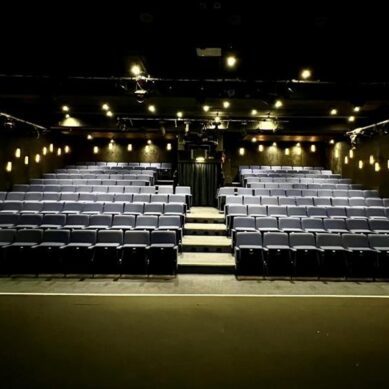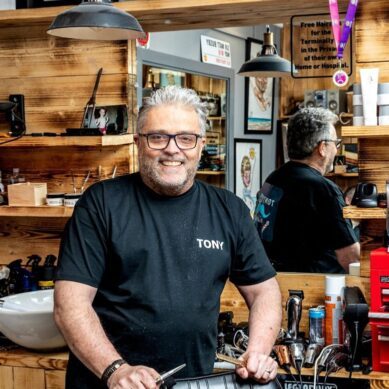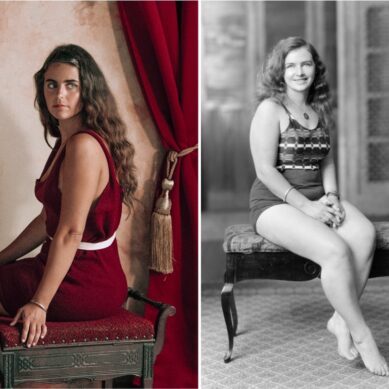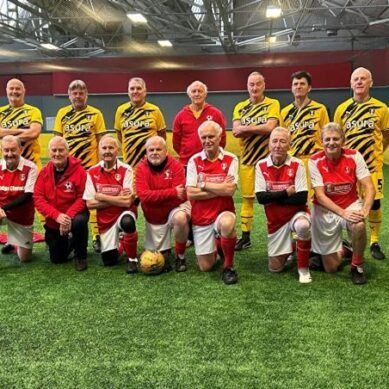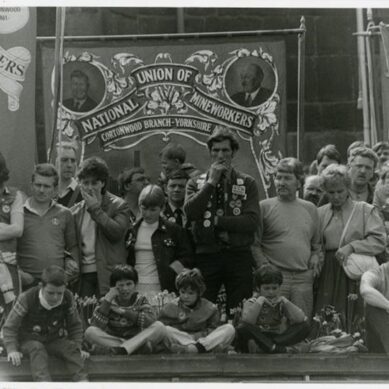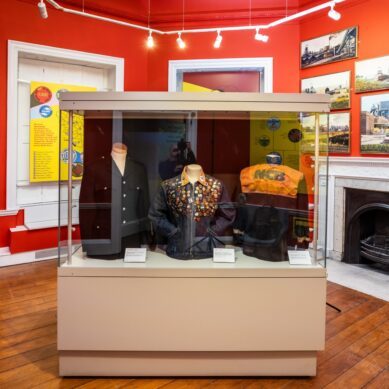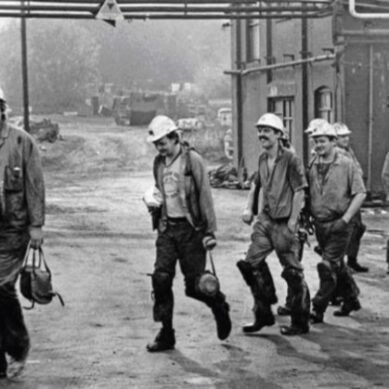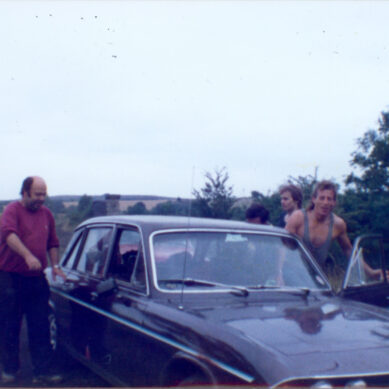Noble by name, noble by nature, Barnsley boxer Lee Noble’s plucky and fearless outlook saw him get into the ring 47 times during his eight-year professional career, going toe to toe with some heavy hitters.
But his bravest fight of all would be on the other side of the ropes as he battled his toughest opponent – leukaemia.
Sadly, after a seven-year fight, Lee passed away in March this year aged 33. As part of Blood Cancer Awareness Month, his parents, Lynda and Paul Noble, are sharing their son’s courageous journey to raise awareness of cancers of the blood. But they’re also hoping the public can help them to grant Lee’s dying wish of donating bone marrow drills to Sheffield Royal Hallamshire Hospital to benefit South Yorkshire people undergoing treatment for leukaemia.
Born and raised in Dodworth, Lee first took up boxing aged 12 when his mum was concerned he was getting bullied at secondary school. She wanted her son to be able to defend himself, but also knew the discipline and fitness needed in boxing would give Lee a welcomed outlet outside of school. He joined Hoyle Mill Police amateur boxing club where he was coached by Frank Lindley. Then at age 16, he was scouted by the godfather of boxing, Brendan Ingle, who saw potential in Lee.

At Ingle’s Gym in Sheffield, Lee became an amateur boxer where he reached the final of the ABA Schoolboys tournament. He subsequently turned professional aged 18 in 2006, guided through every jab, hook and blow by Ingle who became like a second father to Lee, as he did all the brotherhood of young boxers he coached.
At 6ft2 and of slight build, Lee trained hard seven days a week to stay in his super-middleweight division. For his quick-as-a-flash fighting style, he earned himself the nickname ‘Lightning’ Lee Noble, going on to win 20 of his professional fights with three KOs. He won masters championship belts in the British middleweight and international light middleweight divisions and was a contender for the English title.

However, after a run of five consecutive wins in the autumn of 2014, little did Lee know he would never box professionally again.
Lee was a 27-year-old father of two young children when he started to get aches and pains in his joints, particularly his shoulder, which he put down to training and competing taking its toll on his body. When it then progressed to him struggling to get out of bed, he sought medical advice which at first was presumed to be arthritis causing his pain. It was only when a nurse spotted something in his blood test results that immediate concerns were raised that it could be something more serious and Lee was blue-lighted to the Hallamshire.
After various diagnostic tests including bone marrow biopsies, lumbar puncture and imaging tests, it was confirmed that Lee had Acute Lymphocytic Leukaemia (ALL), a rare, aggressive and fast-progressing cancer which affects the white blood cells.
“You don’t really understand leukaemia until you’ve experienced it. Our Lee thought he would just get rid of the cancer and get back in the ring. But chemotherapy and radiotherapy weren’t working, and once he had a stem cell transplant his career would definitely be over,” Lynda says.
Lee had four lots of cancer treatment and three stem cell transplants over the seven years in what would become an emotionally turbulent time for the Noble family. Lee went into remission three times but never for more than 12 months.

In 2015 he was given the all clear, only for his cancer to return in 2018. In 2019 he was then told it had spread to his brain and Lee was given a terminal diagnosis. By 2020, specialists told him there was nothing else they could do.
“The cancer was just too strong; they couldn’t hit it with anything else. Our Lee went through hell and back for seven years, but he was always still smiling and was never down. He was a very funny character, he had brilliant banter and lived life to the fullest whenever he could, especially when he got the terminal diagnosis.
“He knew the cancer had come back as he could feel a certain pain in his shoulder, but he was on holiday in Mexico. If it was me I’d have been straight on the plane home, but he was dancing about in Coco Bongos. His mindset was he’d deal with it when he got back and it wasn’t going to spoil what could be his last holiday,” his dad Paul says.
Last November, Lee’s condition deteriorated and he moved back home into his parents’ Dodworth bungalow as he needed round-the-clock care.
“He couldn’t stand up or get out of the bath which was hard to see when your lad has always been so strong. He didn’t like his dad to see him like that. But he still tried his best to look like himself, doing his hair and wearing nice clothes,” Lynda says.

At the beginning of this year, following his third stem cell transplant Lee was admitted to hospital with an infection called candida pneumonia. Due to the intense chemotherapy needed to prepare his body for the transplant, he was immunocompromised and at higher risk of contracting infections. He then developed sepsis which ultimately led to his death.
“His body took a lot more hammer than most during the years of cancer treatment because he’d been so fit previously. But he just couldn’t fight the infection; his body needed to work a hundred times harder than someone who was healthy. The saddest part is we found out afterwards the stem cell had worked and the leukaemia had gone again,” Lynda says.
And all this during a time when Covid and lockdowns prevented his family from visiting Lee before it was too late. In his final days, Lee was on life support and was given a 50/50 chance of survival, but he didn’t even have the energy to charge his phone to be able to speak to his parents at home.
When his family were able to see Lee, he told them his final wish was for them to raise money to donate a bone marrow drill to the Hallamshire in his memory.

With leukaemia, the only way doctors can check if the cancer has returned is through lumbar punctures, of which Lee had 58, and excruciatingly painful bone marrow biopsies, of which he had 51. The biopsy is an agonising procedure which Paul says left Lee screaming the hospital walls down.
He was then invited to take part in a clinical trial in London to test a new method using a less invasive bone marrow drill which would reduce the pain and discomfort, as well as speed up the recovery.
The drills cost £6,000 to hire for two years, during which time they can be used on 100 people – that’s just £30 a person to eliminate the need for many painful procedures. The Noble family originally set a target to raise enough for one drill, which they have already smashed thanks to donations from family, friends and the boxing community.
With the support of the Sheffield Hospitals Charity, they are now on a mission to raise more funds to hire another drill and support the ward at the Hallamshire where Lee received most of his treatment and which is one of the country’s leading haematology centres.
This autumn, Lee’s family have organised a charity night at Barnsley Trades Club on Racecommon Road in his honour, with live music from Barnsley band, Fully Lynched. The event is on Friday 12th November and tickets are just £5.00. Lee’s sister Natalie and his fiancé Nicolle will then be doing a sponsored skydive in December dressed as Father Christmas and Mrs Claus.
Throughout his illness, Lee tried his hardest to support others in need, raising thousands of pounds for Weston Park Cancer Charity, donating boxing gloves to the late Bradley Lowrey, and coaching underprivileged children in Bolton-upon-Dearne. Even in his final wishes, the welfare of others was ingrained in his thoughts.
If you would like to support the fundraising appeal and help the Noble family achieve this legacy in Lee’s name to benefit people living with leukaemia in South Yorkshire, you can donate here. Or for tickets to the charity night you can email nblyn7@aol.com.
What is leukaemia?
Leukaemia is a type of blood cancer that affects blood cells in your bone marrow. There is no known cause and leukaemia cannot be prevented.
Your bone marrow is a spongy tissue found inside some of your bones, and it’s where the body makes blood cells. In leukaemia, blood cells are not produced the way they should and you may have too many, too few, or blood cells that don’t work properly.
There are many types of leukaemia, but the four main types are either chronic (slow growing) or acute (fast growing) and affect either the myeloid cells (platelets and red blood cells) or lymphocytes (white blood cells).
Possible signs and symptoms can include:
- Fatigue
- Bruising or bleeding easily
- Fever or chills
- Severe and/or repeat infections
- Pain in bones/joints
- Headaches
- Vomiting
- Seizures
- Unexplained weight loss
- Night sweats
- Shortness of breath
- Swollen lymph nodes or organs
Blood cancer symptoms are notoriously vague and non-specific. There are no signs or symptoms of any type of leukaemia which would allow a doctor to make a diagnosis without laboratory tests.
While a simple blood test could indicate leukaemia, most patients with leukaemia will have a bone marrow sample taken to confirm the diagnosis and to help to determine exactly what type of leukaemia a patient has.
